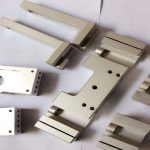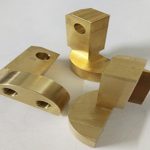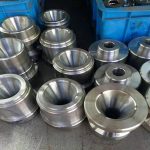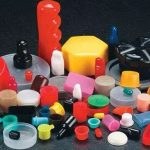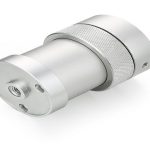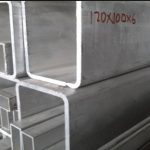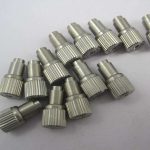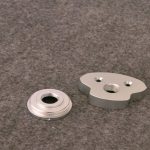Polyurethane (PU for short) is an organic polymer material synthesized by the reaction of polyisocyanate and polyol. Polyurethane has superior performance. Compared with rubber materials, polyurethane has excellent abrasion resistance and resistance to cutting and tearing.
Compared with metals, plastics and other materials, polyurethane has outstanding sound insulation and resilience. In recent years, polyurethane has gradually expanded its application range by virtue of its comprehensive performance advantages, involving electronics, textiles, construction, medical, automotive, new energy, aerospace and other fields. With the rapid development of the downstream market, the polyurethane market demand continues to be released , Driving the continuous expansion of the industry scale.
According to the “Polyurethane Industry Investment Environment and Investment Prospect Forecast Analysis Report 2021-2025” released by the New Sijie Industry Research Center, the global polyurethane production capacity is mainly concentrated in China, the United States, Germany, Japan, and South Korea, among which the market accounts for a relatively high proportion. The polyurethane manufacturers in China include BASF, Dow, Wanhua Chemical, Covestro, etc. After years of development and accumulation, my country has developed into the world’s largest polyurethane producer and consumer. The total domestic polyurethane production capacity accounts for about 36.4% of the global total production capacity. In 2020, my country’s polyurethane industry output will be around 14.7 million tons.
Compared with developed countries such as Europe and the United States, my country’s polyurethane industry started late. Although my country has become a global polyurethane producer at this stage, domestic companies still have room for improvement in product quality, production technology, R&D investment, and brand building. There are a large number of polyurethane manufacturers in my country. After years of development and accumulation, the domestic polyurethane industry has formed a certain scale of industrial clusters. From a distribution point of view, polyurethane industrial clusters are mainly distributed in the Pearl River Delta, the Yangtze River Delta, the Bohai Rim, the Southwest region and the sea. Western economy and other regions.
my country is a major producer of building materials, automobiles and chemicals in the world. The domestic market has a huge demand for polyurethane. In recent years, as Chinese residents pay more attention to environmental protection, and environmental protection supervision has become increasingly strict, the polyurethane industry has become environmentally friendly. The trend of upgrading in the direction of safety, safety, and energy saving is becoming more and more obvious. In this context, the water-based polyurethane industry has ushered in a good opportunity for development. Waterborne polyurethane production has high requirements for equipment and technology. Driven by market demand upgrades and increasingly stringent environmental protection policies, some small and medium-sized polyurethane manufacturers are under increased operating pressure. In the future, the polyurethane market will continue to grow to companies with high-end polyurethane production capacity. Gather.
The future development of my country’s automobile industry will gradually shift from pursuing production capacity and scale to paying more attention to quality and level. Lightweight, environmental protection, comfort and safety will become the three major themes of the future development of my country’s automotive materials. According to relevant statistics, at present, the average consumption of PU for a car in my country is 15-20 kg. In 2010, the PU consumption of my country’s automobile industry was about 300,000 tons. The application of PU materials in cars is one of the important indicators to measure the quality of cars. For high-end cars in Europe and America, the amount of PU is 25-30 kg.
In 2009, the consumption of PU products in my country reached 5.5 million tons, and in 2010, the consumption reached 6.4 million tons. In 2009, the consumption of MDI was 1 million tons, TDI was 1.43 million tons, and polyether polyol was 1.35 million tons. my country’s PU industry developed rapidly. It has created necessary conditions for the rapid development of my country’s automobile industry.
PU material products used in the automotive industry mainly include soft, rigid, semi-rigid, foam, PU elastomers (including CPU and TPU microporous elastomers), adhesives, sealants and coatings (see Table 1).
PU is the key material to realize the lightweight of automotive materials
The application of U foam in automotive interior parts: In 2010, the amount of soft PU foam in automotive interior parts in my country was 152,000 tons, and the amount of hard PU foam was 67,000 tons. Mainly used in automobile dashboards, seat cushions, backrests, headrests, doors, armrests, steering wheel assemblies, automobile roofs, door inner panels and seals. Reducing the density of PU foam is an important technical way to achieve lightweight automotive interior parts. At present, the main technical approaches adopted in China are: high-solid content, low-viscosity POP (grafted polyether) and high-functionality, high-activity polyether and other technical approaches.
RIM (Reaction Injection Molding), RRIM (Enhanced Reaction Injection Molding) and SRIM (Structural Reaction Injection Molding) PU products are used to achieve lightweight applications in automobiles: RIM, RRIM and SRIM are in Europe and America
It has been widely used in the automotive industry, mainly for bumpers, steering wheels, body panels, engine hoods, trunk covers, radiator grilles, mudguards, spoilers, etc. The weight of RRIM products is only half that of steel, which is an important way to realize the lightweight of automobiles. At present, the domestic automobile industry RIM and other technologies still have a certain gap in the amount and quality compared with Europe and the United States, and further development is needed.
PU material is the most promising and important material for automobile to realize plasticization. At present, the development direction of the world’s automobiles (mainly cars and new energy automobiles) is lightweight. Lightweighting is to improve fuel combustion efficiency and reduce vehicle exhaust emissions, and is also an important technical measure to achieve vehicle energy saving and emission reduction. The plasticization of automobile materials and replacing steel with plastic is an inevitable trend and an important technological approach for the development of lightweight automobiles. Auto parts of different materials consume different energy.
Taking the production of parts with the same weight (450 grams) as an example, the energy consumed by using plastic parts is equivalent to 3.9-4.5 kg of gasoline, and if aluminum or steel is used, the energy consumed is equivalent to 5.3-6.8 kg of gasoline. Statistics show that for every 10% reduction in vehicle weight, fuel consumption can be reduced by 6% to 8%.
At present, the average plastic consumption of cars in technologically developed countries is 120 kg/vehicle, and the average plastic consumption of German cars is 300 kg. The average plastic consumption of cars in my country is 80-100 kg/car, and the consumption of Audi A2 cars is 220 kg. By 2020, the average plastic consumption of cars in technologically developed countries will reach more than 500 kg/vehicle. BASF has manufactured a sports car with a full PU body, which has a top speed of 270 km/h. Using RRIM technology, the PU body is a carbon fiber reinforced microporous PU elastomer composite material.
TPU and its composite materials are one of the important raw materials for the realization of plastics in automobiles
At present, the plastic materials used in cars are mainly PP (polypropylene), PVC (polyvinyl chloride), PU and PA (nylon). The development direction of automobile plastic parts is to continuously introduce materials that are cost-effective and recyclable. The thermoplastic polyurethane elastomer (TPU) material can play its unique advantages. TPU has been used in a variety of components of the car body, including TPU plastic alloys, such as TPU and PP, PVC, PA and other plastics to form a cost-effective composite material, which can play a major role in the automotive industry. TPU rubber composite material: A composite material composed of TPU and a variety of rubbers has important uses in the automotive industry.
(1) TPU/PP (polypropylene) plastic alloy
At present, domestic and foreign are developing reinforced rubber-plastic composite structural materials for automotive TPU-PP glass fiber (including long fiber and short fiber). This material has the advantages of light weight, excellent cost performance, recyclability, etc., and is expected to be widely used in automobiles Once the interior and exterior trim parts, such as bumpers and their brackets, various brackets and structural frames on the car, are successfully developed, the application of TPU in the car will increase significantly.
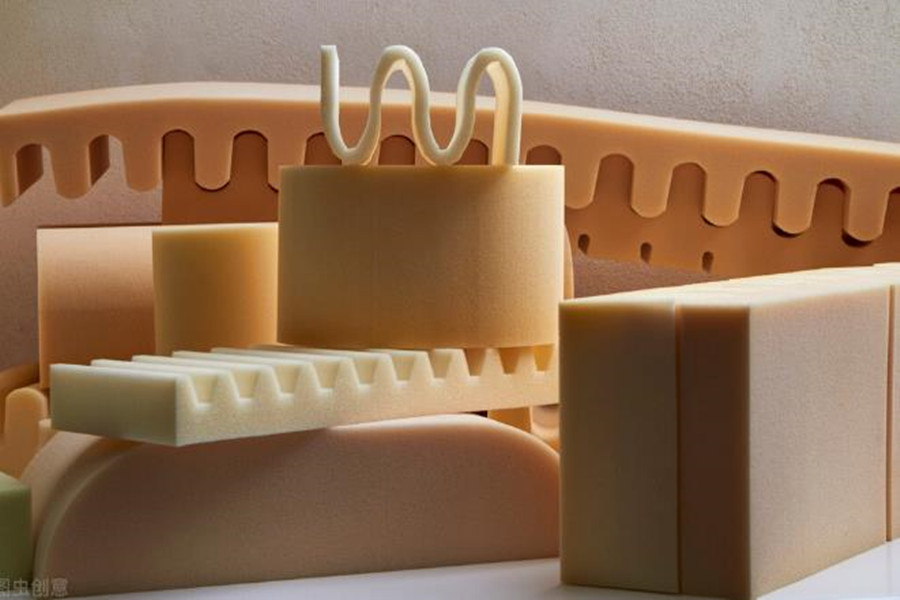
(2) TPU/PC (polycarbonate) plastic alloy
The TPU/PC blended gold can improve the toughness, stress cracking, fracture sensitivity, solvent resistance, and chemical resistance of PC. At the same time, it can reduce the molding processing temperature of PC and expand its application range in the automotive industry.
(3) TPU/PVC plastic alloy
TPU/PVC alloy can significantly increase the elongation of PVC (which can replace the toxic DOP plasticizer) and expand the application field of PVC. Recently, it has been reported that the reactive blending technology is used to prepare TPU/PVC alloys. First, dissolve PVC in the diol, which is the raw material of TPU, and then add isocyanate for in-situ polymerization to form a TPU/PVC alloy. The performance is better than the general TPU/PVC blended gold, which expands the scope of application in the automotive field.
(4) TPU/PA6 (nylon 6) plastic alloy
Nylon 6 is the most cost-effective and most versatile engineering plastic in nylon. PA6 has the characteristics of high strength, corrosion resistance, oil resistance and excellent self-lubrication, but it has the disadvantages of low impact toughness and high moisture absorption. This limits its application areas. TPU elastomer has the characteristics of high strength, high elasticity, and high wear resistance, but it has the disadvantage of not high temperature resistance. The development of TPU/PA6 engineering plastics combines the advantages of the above two materials, overcomes their shortcomings, and will be a new type of high-performance composite material. It has a wide range of application value in the automotive industry.
Both TPU plastic alloy and TPU rubber composite have the advantages of being recyclable. At present, there are more than 50 million scrapped vehicles in my country, and 10 million old vehicles will need to be transformed and scrapped every year. The advanced countries in Europe and the United States have clearly put forward the recyclability index and availability rate for plastic parts used in the automotive industry, requiring that the recyclability rate of automotive plastics be more than 95% and the availability rate be more than 90%. The National Development and Reform Commission, the Ministry of Science and Technology, and the Environmental Protection Agency have jointly formulated a policy on auto parts recycling technology “By 2017, my country’s auto recycling rate shall reach 95% or more and the availability rate shall reach 85%.” TPU is a recyclable thermoplastic elastomer, but the current annual consumption of TPU in my country’s automobile industry is only about 30,000 tons. Composite materials such as TPU plastic alloys undoubtedly provide new types of TPU elastomer materials in the automotive application. Huge market opportunities.
PU green environmental protection material is the inevitable trend of the development of automotive materials
(1) Develop low-VOC PU foam
The content of VOC (Volatile Organic Compounds) in automobiles has become an important evaluation index for consumers’ awareness of their products;
VOC volatiles in PU foam materials, PU adhesives, PU coatings, PU synthetic leather, etc. in the car are the main factors affecting the air quality in the car;
Research and control of harmful gases and volatility in PU materials and effective preventive measures are of great significance to the improvement of the car environment and the development of my country’s automobile industry;
The main sources of VOC in PU foam used in automotive interior parts: polyether polyols (mainly POP), catalysts, foam stabilizers (stabilizers), volatile organic compounds in isocyanates, including aromatic compounds (toluene, styrene) and organic amines Compounds, etc.;
Develop high-solid, low-volatility POP, organic amine reactive catalysts, low-volatility foam stabilizers, etc.
(2) Actively develop green technology for producing vegetable oil-based polyols
Vegetable oil is a renewable resource. Using vegetable oils such as soybean oil, castor oil and palm oil as raw materials, corresponding vegetable oil polyols can be developed to replace polyether polyols in petrochemical routes. Bio-based PU foam is better than petroleum-based PU foam in terms of recycling rate, organic matter volatilization and CO2 emissions. It is a green and environmentally friendly raw material. The United States focuses on the development of soybean oil-based vegetable oil polyols. Ford Motor Company of the United States has successfully developed soybean oil-based PU foams for use in car seat cushions and seat backs. Malaysia utilizes local resources to develop a series of palm oil polyols, which are widely used in the field of PU rigid foam. Toyota Motor Corporation of Japan has successfully developed castor oil-based PU foam seat cushions.
(3) Actively develop PU automotive green tire technology
At present, most of the global automobile tires use rubber tires. When such automobile tires are running in the city, a large number of harmful particles are emitted in the air due to friction with the ground, which is an important source of pollution that causes poor urban air environment quality. PU tires have excellent wear resistance (3 to 5 times that of natural rubber, and up to 10 times in actual applications), and do not contain carbon black and paraffin hydrocarbon harmful substances. It is used in urban traffic and will greatly improve urban air. quality. PU tires also have the advantages of lower processing energy consumption, energy saving and emission reduction, and long service life than rubber tires. The important raw material of rubber tires is natural rubber (NR). my country’s tire industry needs 490-6 million tons of NR each year, accounting for 50% of global production, while the self-sufficiency rate is only 13%-16%. A large amount of NR needs to be imported. The current price of NR has reached as high as Above 40,000 yuan/t. Therefore, it is imperative to actively develop PU tires, and it has been listed as a key development target during the “Twelfth Five-Year Plan” period of the China PU Industry Association.
(4) Broad prospects for the development of water-based PU adhesives for vehicles
With the improvement of environmental protection regulations and the increasing awareness of environmental protection, solvent-based vehicle adhesives will gradually be replaced by environmentally-friendly adhesives, such as water-based adhesives. In particular, the promotion and application of water-based automotive interior glue is imperative. Water-based interior glue is mainly used to bond interior parts such as car ceilings, floors, carpets, instrument panels, and door panels. At present, all Japanese automotive interior adhesives are water-based, 60% in the United States and only 20% in my country. Among water-based automotive interior glues, PU glue is the main variety. my country’s water-based PU interior glue technology has become more mature and should be actively promoted in the automotive field.
In addition, with the light weight of automobiles and the continuous increase in the amount of plastic parts, environmentally friendly solvent-free PU structural adhesives have broad application development prospects in the automotive field, such as glass fiber reinforced plastics (FRP) and sheet molded composite materials (SMC) At present, it has been widely used in automobile body panels, roofs, cockpit roofs, etc. in Europe, America and Japan. FRP and SMC cannot use traditional welding technology, and must be assembled with the car body frame using bonding technology. Solvent-free PU adhesive is one of the important varieties.
(5) Bright prospects for the development of water-based PU coatings for vehicles
Water-based PU soft-feel coating is a low-VOC coating, which has more than 10 times lower VOC volatiles than traditional solvent-based coatings. With the light weight of automobiles, the application of plastic parts continues to expand, and environmentally friendly green water-based PU flexible materials are the future development direction of automotive plastic parts coatings.
(6) PU synthetic leather has broad application prospects in automotive interiors
Compared with leather, PU synthetic leather has the advantages of odorless, soft hand, good abrasion resistance, high tear resistance, and good color fastness of the finished product. It overcomes the problems of increasingly tight leather resources and serious environmental pollution. Green environmental protection requirements for accessories. In particular, PU microfiber imitation deerskin velvet has the advantages of luxurious appearance, soft texture, elegant luster and good durability. It gives car interior parts a sense of room and has been favored by car manufacturers and has become an indispensable premium for high-end cars. Environmentally friendly interior materials.
PU material comfort and safety is its important development direction
(1) Improving car comfort is an important development direction of PU automotive interior parts
The seat cushion, backrest, and headrest of a car are the parts where polyurethane foam is used in a large amount in the car, and they are also the most sensitive parts of people’s riding comfort. Therefore, the performance requirements of the products are also very strict. At present, most of the polyurethane foam seat cushions used in domestic automobiles are cold-cured products with uniform density. The new type of car seat cushion developed in recent years uses dual-hardness or multi-hardness foam. The production of this dual-hardness seat cushion can be achieved by injecting polyether polyol and isocyanate into the mold through a double-head or multi-head mixing head, or Using the full MDI cold molding process, the hardness of different parts of the seat cushion is accurately controlled by changing the isocyanate index-the middle part of the seat cushion is soft and the sides are harder. The soft foam gives people a sense of comfort, and the hard parts on both sides provide support. When the car is driving or turning at high speed, it helps to keep the body of the driver and passengers stable and improve the safety of the ride. Wuhan Xingqiao Polymer Technology Co., Ltd. has adopted multi-component mixing technology to produce dual-hardness and multi-hardness foams, and its technical level is in a leading position in China.
(2) Microporous PU is used as a vibration damping pad for the car floor
Microcellular polyurethane foam is expected to replace rubber materials in most car bodies as underbody shock absorbers. North American automakers are working hard to make cars quieter and more comfortable. The shock absorber is installed on the chassis of the car to isolate the car body and the frame to improve the ride and driving quality. Microcellular polyurethane is a unique innovative material for sound insulation and vibration reduction (NVH).
As a substitute for rubber car body assembly, microcellular polyurethane has a competitive price, which can effectively improve shock absorption performance, extend material performance retention time, reduce quality, and improve the assembly process. Another advantage of using microporous polyurethane is that by changing the material density, it is convenient to optimize the body and chassis shock-absorbing rubber pads, instead of changing the material production formula or product geometry as in the traditional process. The latter requires the production of prototypes, which is costly and time-consuming.
(3) Microporous PU elastomer auxiliary spring shock absorber
The auxiliary springs for the front and rear independent suspension shock absorbers of cars are made of cylindrical tower-shaped microcellular polyurethane elastomer (micro-foaming type). The use of this spring system has a particularly obvious effect on improving the performance of the vehicle. The tensile strength of the spring is ~20 N/mm, the elongation is >300%, and the tearing strength is >8N/mm. The spring compression stress rises very little, and the stress does not rise significantly until the deformation reaches about 35%. At this time, the deformation rapidly increases and approaches the maximum value, which meets the requirements of automobile form stability and ride comfort, and greatly improves the use of shock absorbers. life. Some vehicles use air springs in conjunction with microporous polyurethane elastomer springs to reduce the design volume and improve the driving stability of the vehicle. There are two types of microcellular polyurethane elastomers for vehicles, NDI type and MDI type, according to the type of diisocyanate used. The main difference lies in their dynamic and static properties. At present, more than 90% of high-end luxury cars use microporous polyurethane shock-absorbing buffer blocks. Compared with rubber shock-absorbing buffer blocks, it has very high compressibility, deformability, excellent mechanical properties and outstanding dynamic fatigue resistance. .
(4) PU bumper
The bumper is installed in the front and rear of the car to buffer and reduce damage in the event of a collision. The materials used are required to be both rigid and elastic. In recent years, a new type of suspension structure bumper made of microcellular polyurethane elastomer has begun to appear. Due to the low hardness and high compression rate of the microcellular elastomer, 80% of the impact energy can be absorbed through deformation, and the rest of the impact energy can be transferred to the chassis Above, this kind of bumper has the functions of light weight, safety, stability and noise reduction. Because the use of polyurethane materials is more expensive, it is used in Europe, the United States, Japan and my country. Use it as a bumper for luxury cars.
(5) PU airbag
The installation of airbags in automobiles is an inevitable trend in the development of the modern automobile industry, and plays a major role in protecting the life safety of drivers. Airbags must have a certain strength, can withstand high-speed impacts, and require good low-temperature flexibility. Therefore, it is suitable to be made of polyurethane materials. The skin of the airbag is made of polyurethane elastomer, and the back is lined with polyurethane foam. In addition, it can also be used Self-skinning polyurethane foam. The amount of material used for each airbag is 200~400g.
(6) PU noise reduction technology
With the development of the automobile industry, as a means of transportation, people not only put forward high requirements for its performance, but also put forward higher and higher requirements for its ride comfort. The noise level in the car reflects its comfort. An important indicator of In order to improve the comfort of vehicles, the world’s major automobile companies have formulated strict control standards for the noise level in the car, and the control of the noise in the car is an important research direction. Especially for cars, the noise condition in the car is one of the standards to measure the grade of the car. The sports noise level of the car directly reflects the quality level of the whole car.
Because the polyurethane foam material has the internal structure of a porous sound-absorbing material, that is, it has many tiny gaps and continuous bubbles. Due to the internal friction of the material itself and the friction between the air in the pores of the material and the pore wall, the sound wave energy is greatly affected. With large absorption and attenuation, this sound-absorbing material can effectively absorb the sound energy incident on it, which makes it have good high-frequency sound absorption performance. Due to friction and viscous force, a considerable part of the sound energy is converted into heat energy, so that the sound wave is attenuated and the reflected sound is weakened to achieve the purpose of sound absorption; secondly, the air in the small hole and the heat exchange between the hole wall and the fiber cause The heat loss also attenuates the sound energy.
(7) Halogen-free flame-retardant PU interior parts
The flame retardant properties of PU foam used in car interiors are also an important indicator to measure the safety performance of cars. This kind of flame-retardant material needs to adopt halogen-free flame-retardant technology, and has been applied in some high-end cars at home and abroad.
Link to this article: What is the role of polyurethane materials?
Reprint Statement: If there are no special instructions, all articles on this site are original. Please indicate the source for reprinting:https://www.cncmachiningptj.com/,thanks!
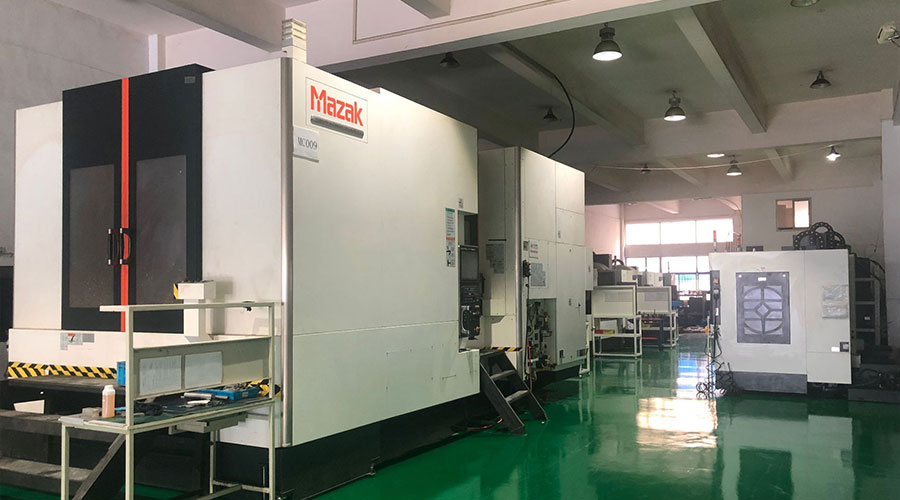 PTJ® provides a full range of Custom Precision cnc machining china services.ISO 9001:2015 &AS-9100 certified. 3, 4 and 5-axis rapid precision CNC machining services including milling, sheet metal to customer specifications,Capable of metal & plastic machined parts with +/-0.005 mm tolerance.Secondary services include CNC and conventional grinding, laser cutting,drilling,die casting,sheet metal and stamping.Providing prototypes, full production runs, technical support and full inspection.Serves the automotive, aerospace, mold&fixture,led lighting,medical,bicycle, and consumer electronics industries. On-time delivery.Tell us a little about your project’s budget and expected delivery time. We will strategize with you to provide the most cost-effective services to help you reach your target,Welcome to Contact us ( [email protected] ) directly for your new project.
PTJ® provides a full range of Custom Precision cnc machining china services.ISO 9001:2015 &AS-9100 certified. 3, 4 and 5-axis rapid precision CNC machining services including milling, sheet metal to customer specifications,Capable of metal & plastic machined parts with +/-0.005 mm tolerance.Secondary services include CNC and conventional grinding, laser cutting,drilling,die casting,sheet metal and stamping.Providing prototypes, full production runs, technical support and full inspection.Serves the automotive, aerospace, mold&fixture,led lighting,medical,bicycle, and consumer electronics industries. On-time delivery.Tell us a little about your project’s budget and expected delivery time. We will strategize with you to provide the most cost-effective services to help you reach your target,Welcome to Contact us ( [email protected] ) directly for your new project.
Link to this article:What is the role of polyurethane materials?
Reprint Statement: If there are no special instructions, all articles on this site are original. Please indicate the source for reprinting:Tungusten,Thanks!^^

